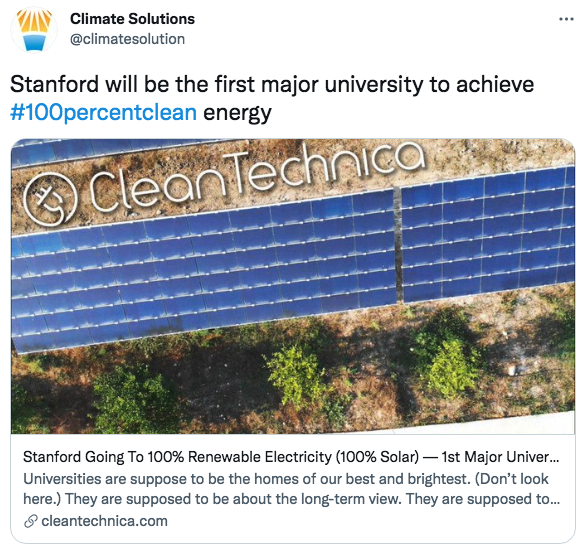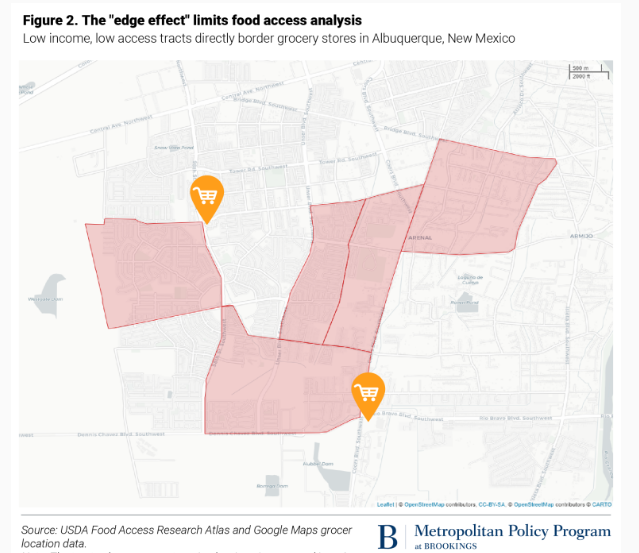What City Observatory did this week
Is the campus 100 percent clean energy? (Only if you don’t count the cars and parking lots). Stanford University announced that its near to realizing a goal to move all of its campus electricity to solar production, and that predictably generated a lot of positive press, some of which made the more sweeping claim that all of Stanford’s energy was now sustainable.
The university’s statement was more circumspect, and the campus sustainability plan notes that it still has a lot of work to do to deal with so-called “scope 3” emissions (all the greenhouse gases that come from people traveling to and from campus on university business.
Must read
1. Why we need to reduce driving to address climate change. In an essay for the Rocky Mountain Institute, Brian Yudkin, Duncan Kay, Jane Marsh and Jackson Tomchek argue that new policies to change land use and encourage more active transportation are central to reducing driving and greenhouse gas emissions from cars. The essay neatly recites the facts about the central role driving plays in climate change, and sketches out policy options, especially including promoting urban infill development and transit-oriented housing, as well as pricing housing and stopping investments in new highway capacity. They push back directly on the predictable questions about equity, noting that we routinely overlook the inherent inequity of our current car-dependent transportation system.
Transportation investments overwhelmingly favor the personal vehicle over public transit and other non-drivers despite the oversized environmental and social costs associated with driving. Further, because the federal government uses tax dollars to fund transportation, non-drivers are essentially subsidizing drivers.
2. Is Uber burning through its cash reserves? Self proclaimed ride-hailing “disruptors” Uber and Lyft have made a mark on urban transportation over the past several years. The big question going forward is whether they have viable financial models. Analyst Hubert Horan has sifted through the two company’s latest financial reports, and concludes that neither is profitable, and both are quickly burning through the cash generated by their initial public offerings. Uber has tried, during the pandemic to pivot to food delivery, but with no apparent positive effect on profitability. Horan calculates that Uber had negative 38 percent profit margin on sales in the first half of 2021. He goes on to argue:
Uber’s operating crisis has seriously, perhaps fatally, undermined the narrative that its stakeholders had accepted for so many years. Customers have begun to doubt their longstanding view that they could rely on Uber to provide service at good prices whenever they wanted. If current prices persist, they will begin to realize that Uber now costs more than the traditional taxi companies they drove out of business. . . Uber had never “disrupted” urban car service economics. It can no longer provide the subsidies to keep drivers and customers happy. As noted, Uber’s cash position has fallen by over $8 billion since the 2019 IPO. While it still has $6 billion on hand, a company that has lost $28 billion in the last 5 ½ years cannot expect to be able to raise significant new equity . . .
The flood of investor cash that has gone into ride hailing has propped up its adoption and growth, but it’s far from clear that, at least at current pricing levels, that its sustainable.
New Knowledge
. . . food deserts are a red herring in terms of ending food insecurity in the United States. As the USDA stated bluntly in a 2014 study of Supplemental Nutrition Assistance Program (SNAP) participants: “Geographic access to food was generally not associated with the percentage of households that were food insecure.” Even with perfect, universal access to food retailers, millions of Americans would not be able to afford enough food, or enough of the kinds of food, to meet their household’s needs.



